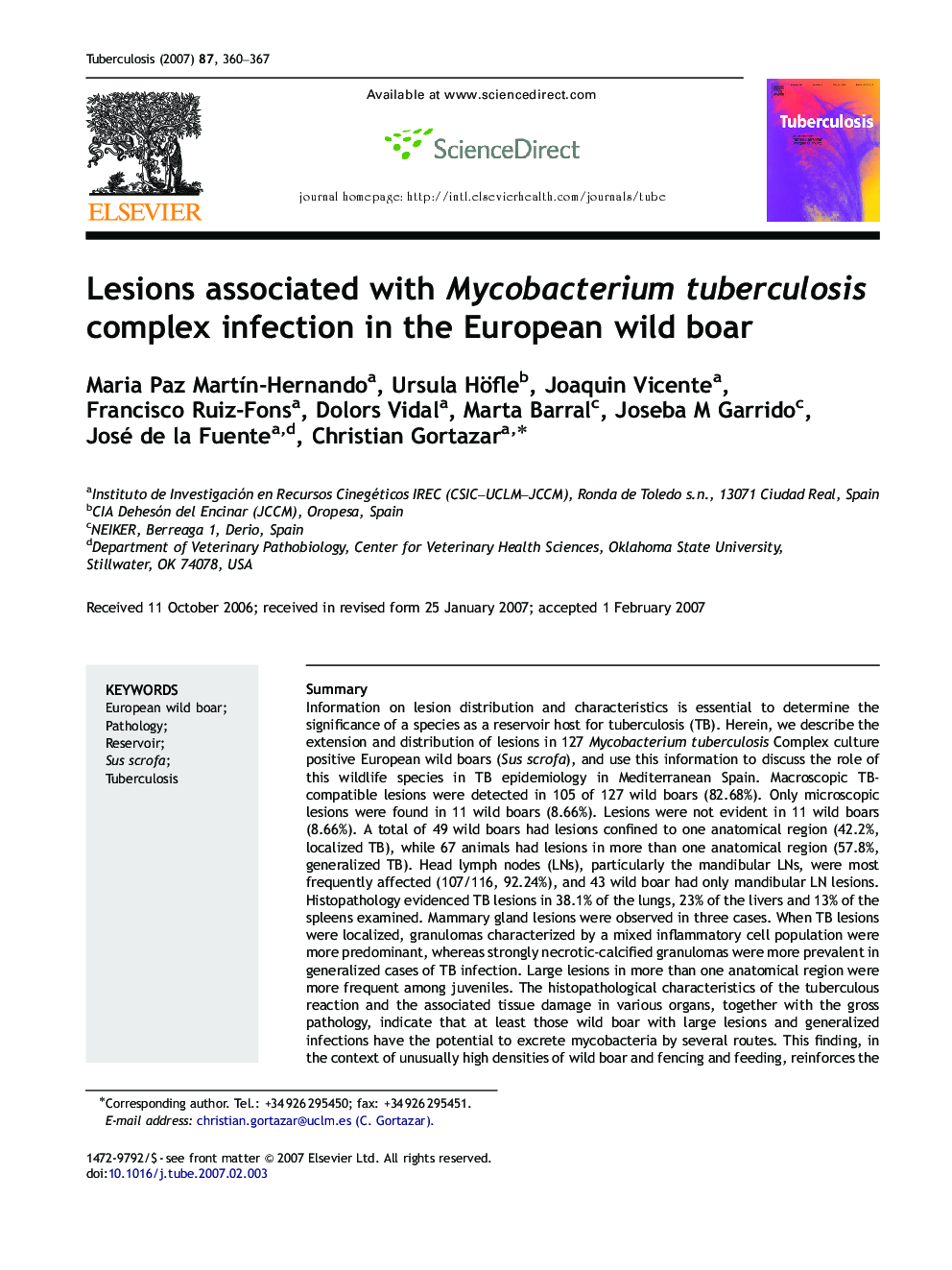| کد مقاله | کد نشریه | سال انتشار | مقاله انگلیسی | نسخه تمام متن |
|---|---|---|---|---|
| 10962313 | 1102385 | 2007 | 8 صفحه PDF | دانلود رایگان |
عنوان انگلیسی مقاله ISI
Lesions associated with Mycobacterium tuberculosis complex infection in the European wild boar
دانلود مقاله + سفارش ترجمه
دانلود مقاله ISI انگلیسی
رایگان برای ایرانیان
کلمات کلیدی
موضوعات مرتبط
علوم زیستی و بیوفناوری
ایمنی شناسی و میکروب شناسی
میکروبیولوژی و بیوتکنولوژی کاربردی
پیش نمایش صفحه اول مقاله

چکیده انگلیسی
Information on lesion distribution and characteristics is essential to determine the significance of a species as a reservoir host for tuberculosis (TB). Herein, we describe the extension and distribution of lesions in 127 Mycobacterium tuberculosis Complex culture positive European wild boars (Sus scrofa), and use this information to discuss the role of this wildlife species in TB epidemiology in Mediterranean Spain. Macroscopic TB-compatible lesions were detected in 105 of 127 wild boars (82.68%). Only microscopic lesions were found in 11 wild boars (8.66%). Lesions were not evident in 11 wild boars (8.66%). A total of 49 wild boars had lesions confined to one anatomical region (42.2%, localized TB), while 67 animals had lesions in more than one anatomical region (57.8%, generalized TB). Head lymph nodes (LNs), particularly the mandibular LNs, were most frequently affected (107/116, 92.24%), and 43 wild boar had only mandibular LN lesions. Histopathology evidenced TB lesions in 38.1% of the lungs, 23% of the livers and 13% of the spleens examined. Mammary gland lesions were observed in three cases. When TB lesions were localized, granulomas characterized by a mixed inflammatory cell population were more predominant, whereas strongly necrotic-calcified granulomas were more prevalent in generalized cases of TB infection. Large lesions in more than one anatomical region were more frequent among juveniles. The histopathological characteristics of the tuberculous reaction and the associated tissue damage in various organs, together with the gross pathology, indicate that at least those wild boar with large lesions and generalized infections have the potential to excrete mycobacteria by several routes. This finding, in the context of unusually high densities of wild boar and fencing and feeding, reinforces the suggestion that wild boar can act as a true TB reservoir under the particular circumstances of Mediterranean Spain. Further studies on the routes of excretion as well as the effect of altering management methods would be of interest to confirm the role of wild boar in TB epidemiology in Spain.
ناشر
Database: Elsevier - ScienceDirect (ساینس دایرکت)
Journal: Tuberculosis - Volume 87, Issue 4, July 2007, Pages 360-367
Journal: Tuberculosis - Volume 87, Issue 4, July 2007, Pages 360-367
نویسندگان
Maria Paz MartÃn-Hernando, Ursula Höfle, Joaquin Vicente, Francisco Ruiz-Fons, Dolors Vidal, Marta Barral, Joseba M Garrido, José de la Fuente, Christian Gortazar,